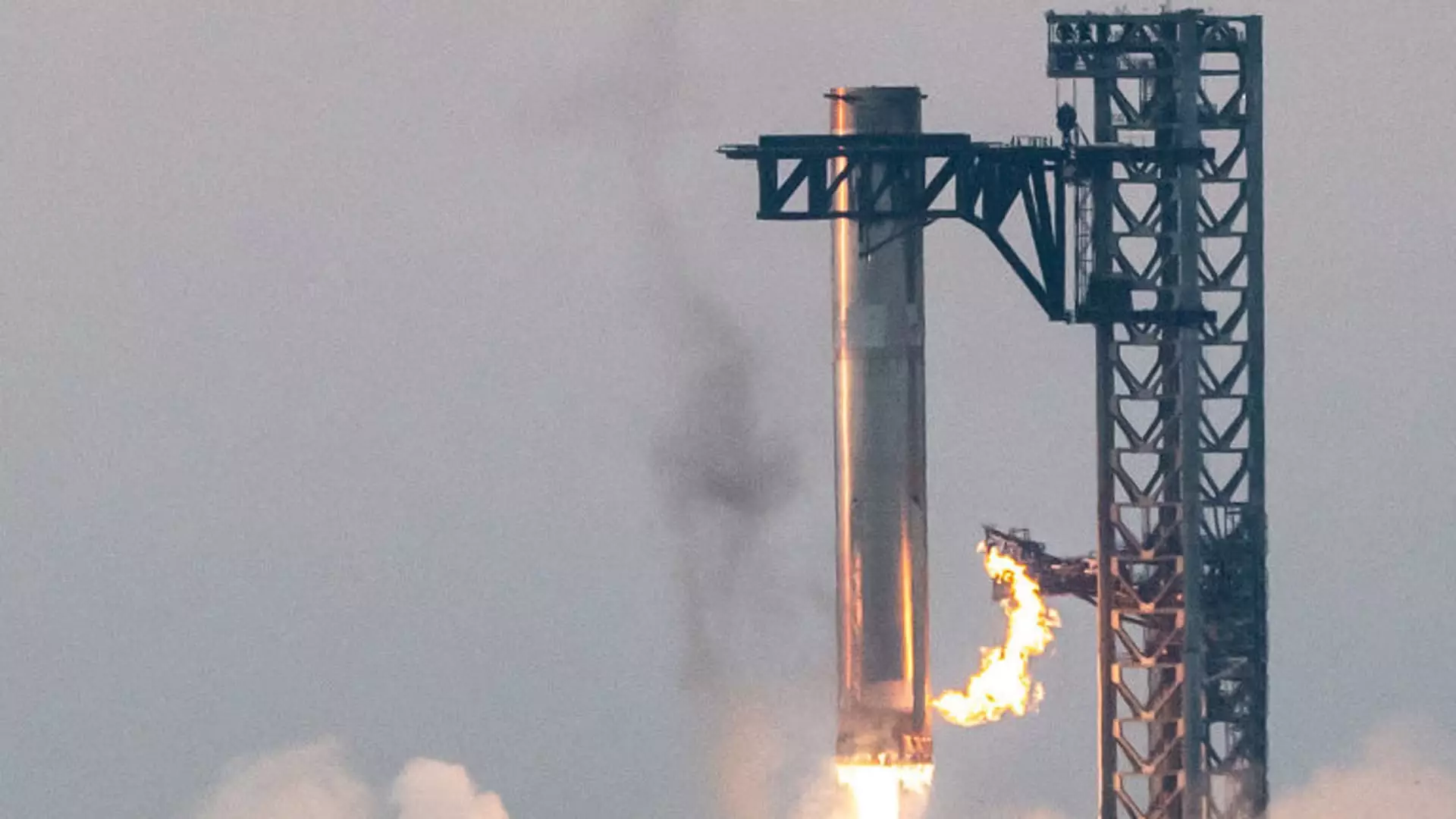On a remarkable Sunday morning, SpaceX achieved a pivotal moment in its ambitious endeavors with the fifth test flight of its Starship rocket. Launching from the company’s Starbase in Brownsville, Texas, at 8:25 a.m. ET, the event showcased not just the capabilities of the rocket but also advanced the ultimate goal of achieving a fully reusable spacecraft. The dramatic catch of the rocket’s towering Super Heavy booster, standing more than 20 stories tall, garnered awe-inspiring reactions, including excitement from SpaceX communications manager Dan Huot who described the event as “looking like magic.”
This successful catch marks a significant step forward, underscoring how far SpaceX has come since its earlier attempts. Each previous flight has incrementally contributed to the knowledge and technology necessary for future missions, fostering a culture of continuous improvement. SpaceX’s emphasis on learning from past flights exemplifies a dynamic and adaptive organization, committed to innovation and excellence in space exploration.
NASA Administrator Bill Nelson’s acknowledgment of SpaceX on social media underscores the broader implications of such successful launches for the Artemis program. As NASA aims to return astronauts to the Moon and establish a sustainable human presence, the evolving capabilities of the Starship system align closely with NASA’s strategic goals. Furthermore, SpaceX has honed its focus on creating a rocket that can transport substantial cargo and human passengers beyond Earth, positioning itself at the forefront of a new era in space travel.
The Starship system’s design intricacies include its reusability, a feature that could revolutionize how humanity explores space. Unlike previous rockets that are often discarded after single-use flights, Starship aims to minimize costs and maximize efficiency by enabling rapid turnaround for missions. This transformation in launch technology could pave the way for an era of routine spacecraft travel and further interplanetary exploration.
SpaceX’s recent history with the Starship system traces back to multiple test flights in previous years, with each subsequent flight setting new milestones. From its launches in April, November of last year to more recent test flights up to July of this year, every venture has derived from insights gained in earlier attempts. It is not merely about reaching space but also ensuring that each mission collects valuable data to inform the next phase of development.
Looking ahead, SpaceX has ambitious plans that extend beyond the atmosphere of Earth. The company envisions hundreds of Starship missions ahead, culminating in crewed flights that will explore the Moon and potentially Mars. However, before this can become reality, SpaceX recognizes the necessity to meet rigorous safety standards and regulatory oversight, especially in light of its recent environmental scrutiny.
Despite its rapid progress, SpaceX faces challenges in terms of regulatory compliance. The recent license granted by the Federal Aviation Administration (FAA) for the flight was a relief for SpaceX, coming sooner than initially anticipated. This expedited approval was vital for the company, which had been vocally critical of the FAA’s previous delays attributed to an exhaustive environmental review process. Such concerns illustrate the friction that can arise between ambitious private enterprises and necessary governmental oversight.
Environmental regulations play a crucial role in ensuring that space launches do not adversely impact the surrounding environment. However, SpaceX has faced fines due to unauthorized water discharges at its Texas launch site, emphasizing the delicate balance between rapid innovation and regulatory compliance that firms in the aerospace sector must navigate.
The complex feat of catching the Super Heavy booster involved extensive preparations by SpaceX engineers, dedicating countless hours to perfecting the intricacies of launch and recovery operations. The catching mechanism, featuring the company’s specialized “chopstick” arms, demonstrates the sophisticated engineering involved in modern aerospace endeavors. This critical aspect of the launch process is not merely a novelty—it represents a fundamental shift towards achieving complete reusability for the rocket.
The technical specifications of Starship further clarify its formidable presence in the rocket industry. Standing at 397 feet with an impressive 33 Raptor engines producing staggering thrust, the Starship system dwarfs previous rockets. With a focus on using liquid oxygen and methane propellants, the system works to ensure sustainability amid rising demands for space travel.
SpaceX’s fifth Starship test flight is not just another milestone; it is a crucial leap toward the future of space exploration. As the company continues to refine its technologies and overcome regulatory hurdles, the potential for Starship to redefine space travel grows exponentially. With ongoing testing and development, the dream of interplanetary exploration inching closer to reality is within grasp. SpaceX’s relentless pursuit of advancements, combined with NASA’s collaboration, might just herald a new age of exploration that will benefit humanity for generations to come.


Leave a Reply